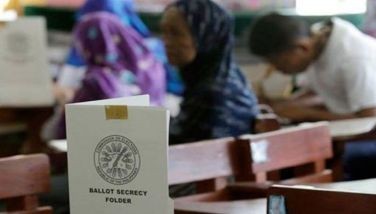Live births in Philippine post biggest drop in 2021

MANILA, Philippines — Registered live births in the country posted the biggest decline in 2021, according to the Philippine Statistics Authority (PSA).
Data from the PSA showed there were a total of 1.36 million registered live births in 2021, down 10.7 percent from the 1.53 million in 2020.
The PSA said the number of registered live births has been on a generally decreasing trend, with a decline of 23.8 percent noted from 1.79 million in 2012 to 1.36 million in 2021.
“The highest rate of decline was noted in 2021 with -10.7 percent,” the PSA said.
The PSA said an average of 3,739 babies were born daily in 2021, translating to 156 babies born per hour or approximately three babies born every minute.
More males – 711,434 accounting for a 52.1 percent share – were born in 2021 than females, which reached 653,305 or a 47.9 percent share.
Of the total live births, 57.4 percent were born in Luzon, 18.4 percent in the Visayas, and 24.2 percent in Mindanao.
Among the regions, Calabarzon had the highest number of births in 2021 with a 14.3 percent share.
“In 2021, most registered births occurred in September at 133,409 or 9.8 percent of the total births in the country,” the PSA said.
Bulk or 93.1 percent of the total births in 2021 were attended by health professionals.
A separate report from the PSA showed registered deaths in the country reached a total of 879,429 in 2021, 43.2 percent higher than the 613,936 in 2020.
“This corresponds to an average of 2,409 deaths per day, which translates to 100 deaths per hour or about two deaths per minute,” the PSA said.
The PSA said the number of registered deaths has trended upward from 2012 to 2021 except in 2017 and 2020. The increase during the 10-year period was at 70.8 percent.
Similar to live births, Calabarzon had the highest number of registered deaths with 138,298 or a 15.7 percent share in 2021.
More male deaths were recorded in 2021 at 491,053 or a 55.8 percent share, than female deaths at 388,376 or 44.2 percent share.
Out of the total registered deaths, 51.9 percent or 456,784 deaths were attended by a health care provider in 2021.
Program for high adolescent pregnancies launches
Meanwhile, the Philippine government, Korea International Cooperation Agency (KOICA) and the United Nations jointly launched a program that aims to address the high rates of adolescent pregnancies in the country.
Funded by the Republic of Korea, through KOICA, the joint program “Accelerating the Reduction of Adolescent Pregnancy in Southern Leyte and Samar in the Philippines” aims to improve access of the adolescent population to sexual and reproductive health (SRH) services and information, to raise their self-awareness on sexual and reproductive health and rights, as well as to enhance leadership and governance on adolescent SRH.
According to the World Bank, the Philippines has one of the highest adolescent birth rates among the major economies in the ASEAN region.
The United Nations Population Fund, United Nations Children’s Funds, and the World Health Organization (WHO) signed the agreement on the joint program – which is slated to last until 2026 – in November 2022.
Leading the program steering committee is the Department of Health with UN Resident Coordinator Gustavo Gonzalez as its co-chair. Joining as members are the mentioned UN agencies, KOICA, Department of Education, and the governors of Samar and Southern Leyte.
“Korea is committed to support the Philippines in its goals to achieve universal health for all. This is the first time that KOICA is working on a joint project on adolescent health in partnership with the three UN agencies in the Philippines. Hence, we look forward to working towards improving the comprehensive sexual and reproductive health and rights of Filipino adolescents in the Philippines,” said KOICA country director Kim Eunsub.
Gonzalez said “Adolescent pregnancy is not only a health and education problem but also an economic development issue.”
“We are hoping that with this program with KOICA, we will be able to reduce adolescent pregnancy and support the Philippines in maximizing the ‘demographic dividend,’” he added.
With the Philippines having one out of three people under the age of 18, it is expected to benefit from the change of population structure toward a younger demographic. However, the window of opportunity that the demographic dividend brings may be lost if Filipinos are not able to care for their sexual and reproductive health and their families.
Gonzalez said the group is eager to build on previous partnerships with the local governments of Samar and Southern Leyte and to accelerate the progress that they have reached in terms of development and humanitarian programs. – Pia Lee-Brago
- Latest
- Trending

































